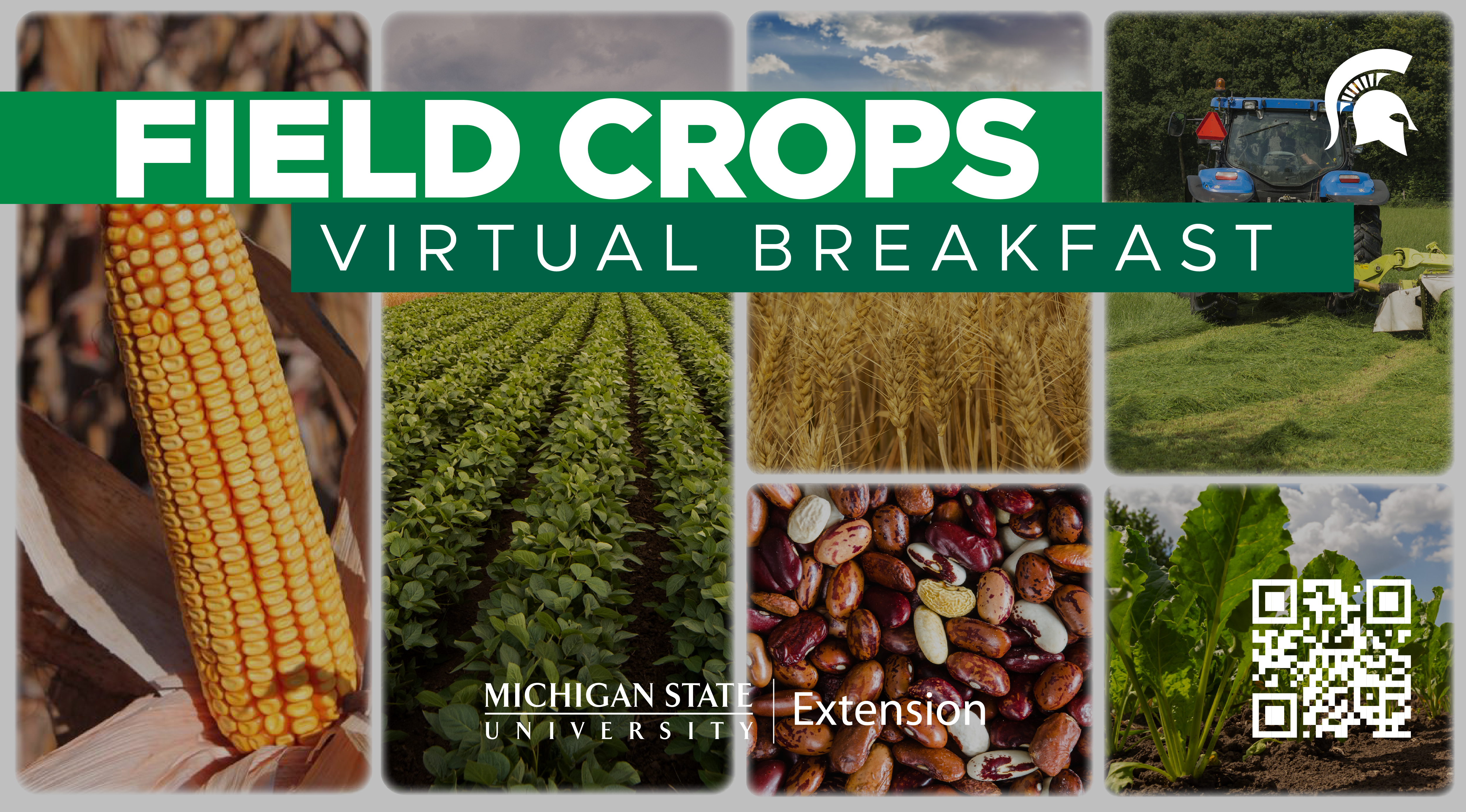White mold and tar spot: Are your fields at risk?
The Field Crops Virtual Breakfast Series continues on July 17 with Marty Chilvers discussing tar spot and white mold management considerations.

White mold, or Sclerotinia stem rot, in soybean is a potential problem for farmers every season, particularly when early-season growth is vigorous and canopy closure is followed by wet and humid weather. Tar spot in corn had a devastating impact on the Michigan corn crop in 2019, but disease incidence and severity have not been as high for most farmers in the past several years. Yield losses of up to 100 bushels per acre for tar spot and essentially total loss for white mold are possible. Farmers and agronomists ask key questions about these diseases: Which fields should be targeted for management? Which fungicides are effective and when should they be applied? What disease forecasting tools are available?
On the upcoming Field Crops Virtual Breakfast Series on July 17, Michigan State University Extension field crop pathologist Marty Chilvers will address these questions and more. Risk factors and management strategies will be discussed including fungicide timing and product selection. Chilvers will also answer questions from attendees about other crop diseases as time allows.
Following Chilvers’ presentation, MSU Extension state climatologist, Jeff Andresen, will provide a summary of the past week’s weather and a forecast for the next one to two weeks. Participants will then have the opportunity for an open Q&A with Chilvers, Andresen, and other MSU Extension specialists and educators
Sign up for Field Crops Virtual Breakfast Series

The Field Crops Virtual Breakfast Series sessions from the MSU Extension field crops team are held every week during the growing season via Zoom. The Virtual Breakfast series keeps attendees informed of in-season updates and issues of concern for field crops. These virtual meetings take place every Thursday morning from 7-8 a.m., March through September 2025. Participants are encouraged to log into the Zoom link 5 minutes prior to the start time to ensure connectivity and receive announcements. The first half of each session includes a timely presentation from a topic expert and the weekly weather forecast. The second half of each session includes time for Q&A’s and updates with MSU specialists and educators.
Participating is easy and free! You can join the live meeting via Zoom using a computer, tablet, mobile device or regular phone line. If you are new to Zoom, simply download the Zoom app and you will be ready to join online every week to see visuals shared by presenters. A call-in by phone option is also available but note that you will only hear the audio portion.
Restricted use pesticide (RUP) credits and certified crop adviser (CCA) continuing education units are available most weeks for live attendees.
Participants must sign up to receive an email notification with instructions for joining the Virtual Breakfast. You only need to do this once and you will receive the Zoom link and call-in phone number, as well as weekly reminders every Wednesday and Thursday. Participants receiving emails can opt out at any time.
Sign up for Field Crops Virtual Breakfast Series
If you cannot participate in the live session at 7 a.m., you can view the recorded version at any time. However, only the live session will be eligible for RUP and CCA credits. Recordings will be closed-captioned and available at the Field Crops Virtual Breakfast webpage and the following MSU Extension field crops team social media platforms: Facebook, Spotify, YouTube, Apple Podcasts and Twitter/X.
If you are unable to sign up online, call the Montcalm County MSU Extension office at 989-831-7500 .
Follow @MSUEFieldCrops on Facebook, Spotify, YouTube, Apple Podcasts and Twitter/X for breaking news.
This work is supported by the Crop Protection and Pest Management Program [grant no 2024-70006-43569] from the USDA National Institute of Food and Agriculture. Any opinions, findings, conclusions, or recommendations expressed in this publication are those of the author(s) and do not necessarily reflect the view of the U.S. Department of Agriculture.



 Print
Print Email
Email




